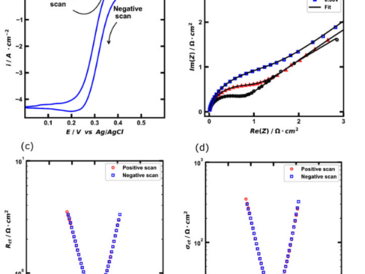John Mugisa; Richard Chukwu; Doriano Brogioli; Fabio La Mantia
Electrochemical Acta 473 (2024): 143473
doi: https://doi.org/ 10.1016/j.electacta.2023.143473
The electron-transfer reaction is of pivotal importance not only in electrochemistry, but also in other scientific disciplines, such as catalysis, biochemistry and biology. The kinetics of such reactions have been thoroughly investigated under ideal conditions (Butler and Volmer or Marcus theories) considering the Frumkin effects; However, the electron transfer in concentrated electrolytes still lacks a general theory. Here we discuss the effect of the concentration of the supporting electrolyte (an inert salt) on the kinetics of three redox couples with different nominal charge: hexaammineruthenium, ferricyanide and ferrocenemethanol. The redox couples are diluted but the supporting electrolyte concentration is high enough that significant deviations of the formal electrode potential from the ideality are observed; the kinetics are also altered. We propose a model in which the electrostatic interactions are described as a complexation between the redox active species and the counter-ions of the supporting electrolyte, in analogy with the treatment of the ion pairs. The model correctly fits the dependence of the formal potential and of the charge transfer resistance on the concentration, thus suggesting that the ion-transfer accompanying an electron-transfer plays a significant role in the overall reaction kinetics. This finding enables a more realistic description of the complex electron-transfer reactions occurring in electrocatalysis and catalysis, bioelectrochemistry and biochemistry, and electrochemical energy storage.
© 2023 The Author(s)


